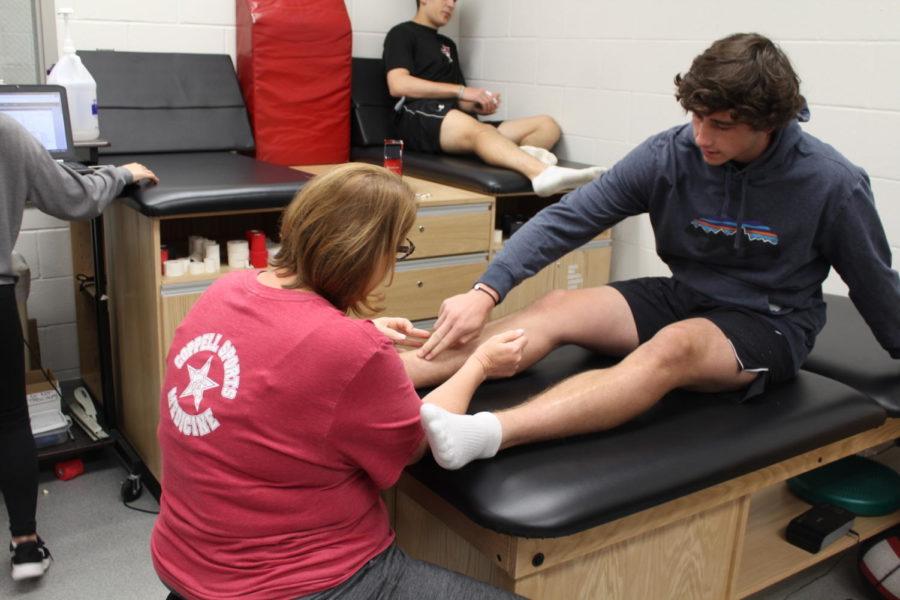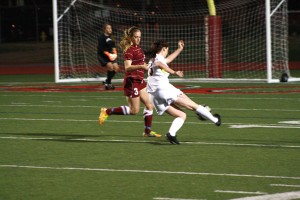“No pain, no gain” taken too far in athletics (Part II)
Coppell High School freshman track runner Zach Stricker talks with Coach Yevtte Carson about his leg Monday morning in the athletic trainers room. Athletes are encouraged to talk to the trainers about any issues regarding their physical health.
April 14, 2018
Editor’s note: This story is a part of The Sidekick series on overexertion.
Out of the eight million high school student-athletes across the United States, a quarter are injured annually. This number is far too high, and is often a result of the excessive pressure athletes place on their own shoulders.
Among dedicated athletes, the idea of pushing through extreme pain for the sake of success is often seen as grand and noble. “No pain, no gain” is a popular phrase in the sports world; while it has truth, many athletes take it to an unhealthy level.
In reality, forcing yourself to continue when you are clearly injured will hinder your success. Athletes need to understand when to take a step back.
“In our society, whether you’re an athlete or a mathlete, [putting a lot of pressure on yourself] is something that is deemed to make you successful,” Coppell High School head trainer Yvette Carson said.
But after a certain point, more pressure does not equate to more success. Nearly half of all teenage injuries are from overuse, which means they are largely preventable by avoiding overexertion.
“We really try to teach kids to listen to their bodies, more than anything,” Carson said. “Teenagers especially, their bodies are changing a lot. They need to be given the opportunity to learn how to listen to their body. There’s a difference between hurting and being injured. Being injured means there’s something wrong.”
Because of the physical rigor in athletics, many feel injury will always be prevalent, regardless of what the athlete does – especially in contact sports such as football.
“Injury is inevitable,” Coppell ISD Athletics Director Joe McBride said. “Anytime you compete [or] do sports, there’s an element of risk.”
Although this is true, athletes can at least minimize the severity and frequency of injuries by backing out of a game or race when it is smart to do so. When they take a break to receive treatment as soon as possible, they will heal much faster than if they continued to strain their injury. Getting back with full strength quickly would lead to more success than playing with a bad injury all season.
I know this from personal experience, as my cross country season last year was cut over a month short after I finished a race on a sprained ankle and worsened the injury. If I had dropped out of the race, my ankle would have healed within two weeks.
Bulldozing through pain is often considered to mean you are more committed and stronger. But sometimes forcing yourself to step out of the game, fighting the desire to compete, requires more strength than the former.














